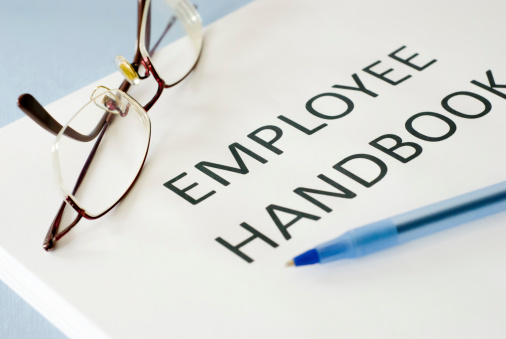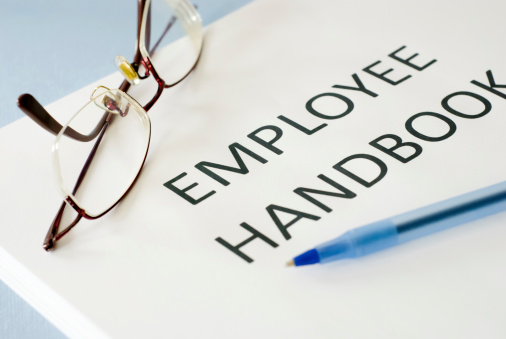30 employee handbook do’s and don’ts from the NLRB

To help employers craft handbooks that don’t violate the National Labor Relations Act, the National Labor Relations Board has issued a compilation of rules it has found to be illegal — and rewritten them to illustrate how they can comply with the law.
It was issued as a memorandum by NLRB General Counsel Richard F. Griffin, Jr. to “help employers to review their handbooks and other rules, and conform them, if necessary, to ensure they are lawful.”
Specifically, the memorandum points out employer policies found to violate and conform to Section 7 of the NLRA.
The main area of concern
Section 7 mandates that employees be allowed to participate in “concerted activity” to help improve the terms and conditions of their work.
The NLRB has made it abundantly clear recently that it’s on the lookout for rules that:
- explicitly restrict protected concerted activity, and/or
- could be construed to restrict protected Section 7 activity.
One thing the memorandum makes very clear: extremely subtle variations in language could be the difference between having a legal policy in the NLRB’s eyes and having one that’s viewed as violating the NLRA.
What to say, what not to say
Here are many of the dos and don’ts highlighted by the memorandum, separated by topic:
Rules regarding confidentiality
- Illegal: “Do not discuss ‘customer or employee information’ outside of work, including ‘phone numbers [and] addresses.’” The NLRB said, in addition to the overbroad reference to “employee information,” the blanket ban on discussing employee contact info, without regard for how employees obtain that info, is facially illegal.
- Illegal: “Never publish or disclose [the Employer’s] or another’s confidential or other proprietary information. Never publish or report on conversations that are meant to be private or internal to [the Employer].” The NLRB said a broad reference to “another’s” information, without clarification, would reasonably be interpreted to include other employees’ wages and other terms and conditions of employment.
- Illegal: Prohibiting employees from “[d]isclosing … details about the [Employer].” The NLRB said this is a broad restriction that failed to clarify that it doesn’t restrict Section 7 activity.
- Legal: “No unauthorized disclosure of ‘business “secrets” or other confidential information.’”
- Legal: “Misuse or unauthorized disclosure of confidential information not otherwise available to persons or firms outside [Employer] is cause for disciplinary action, including termination.”
- Legal: “Do not disclose confidential financial data, or other non-public proprietary company information. Do not share confidential information regarding business partners, vendors or customers.”
The NLRB said the last three rules above were legal because: “1) they do not reference information regarding employees or employee terms and conditions of employment, 2) although they use the general term “confidential,” they do not define it in an overbroad manner, and 3) they do not otherwise contain language that would reasonably be construed to prohibit Section 7 communications.”
Rules regarding conduct toward the company and supervisors
- Illegal: “[B]e respectful to the company, other employees, customers, partners, and competitors.”
- Illegal: “Do ‘not make fun of, denigrate, or defame your co-workers, customers, franchisees, suppliers, the Company, or our competitors.’”
- Illegal: “Be respectful of others and the Company.”
- Illegal: “No ‘[d]efamatory, libelous, slanderous or discriminatory comments about [the Company], its customers and/or competitors, its employees or management.’”
The NLRB said the rules above were unlawfully overbroad because: “employees reasonably would construe them to ban protected criticism or protests regarding their supervisors, management, or the employer in general.”
- Illegal: “Disrespectful conduct or insubordination, including, but not limited to, refusing to follow orders from a supervisor or a designated representative.”
- Illegal: “‘Chronic resistance to proper work-related orders or discipline, even though not overt insubordination’ will result in discipline.”
The NLRB said the rules above, while banning “insubordination,” also ban “conduct that does not rise to the level of insubordination, which reasonably would be understood as including protected concerted activity.”
- Illegal: “Refrain from any action that would harm persons or property or cause damage to the Company’s business or reputation.”
- Illegal: “[I]t is important that employees practice caution and discretion when posting content [on social media] that could affect [the Employer’s] business operation or reputation.”
- Illegal: “Do not make ‘[s]tatements “that damage the company or the company’s reputation or that disrupt or damage the company’s business relationships.”‘”
- Illegal: “Never engage in behavior that would undermine the reputation of [the Employer], your peers or yourself.”
The NLRB said the rules above “were unlawfully overbroad because they reasonably would be read to require employees to refrain from criticizing the employer in public.
- Legal: “No ‘rudeness or unprofessional behavior toward a customer, or anyone in contact with’ the company.”
- Legal: “Employees will not be discourteous or disrespectful to a customer or any member of the public while in the course and scope of [company] business.”
The NLRB said the rules above are legal because they wouldn’t lead an employee to believe they restrict criticism of the company.
- Legal: “Each employee is expected to work in a cooperative manner with management/supervision, coworkers, customers and vendors.” The NLRB says employees would reasonably understand that this states the employer’s legitimate expectation that employees work together in an atmosphere of civility.
- Legal: “Each employee is expected to abide by Company policies and to cooperate fully in any investigation that the Company may undertake.” The NLRB said this rule is legal because “employees would reasonably interpret it to apply to employer investigations of workplace misconduct rather than investigations of unfair labor practices or preparations for arbitration.”
- Legal: “‘Being insubordinate, threatening, intimidating, disrespectful or assaulting a manager/supervisor, coworker, customer or vendor will result in’ discipline.” The NLRB said: “Although a ban on being disrespectful’ to management, by itself, would ordinarily be found to unlawfully chill Section 7 criticism of the employer, the term here is contained in a larger provision that is clearly focused on serious misconduct, like insubordination, threats, and assault. Viewed in that context, we concluded that employees would not reasonably believe this rule to ban protected criticism.”
Rules regarding conduct between employees
- Illegal: “‘[D]on’t pick fights’ online.”
- Illegal: “Do not make ‘insulting, embarrassing, hurtful or abusive comments about other company employees online,’ and ‘avoid the use of offensive, derogatory, or prejudicial comments.’”
- Illegal: “[S]how proper consideration for others’ privacy and for topics that may be considered objectionable or inflammatory, such as politics and religion.”
- Illegal: “Do not send ‘unwanted, offensive, or inappropriate’ e-mails.”
The NLRB said the rules above were unlawfully overbroad because employees would reasonably construe them to restrict protected discussions with their co-workers.
- Legal: “[No] ‘Making inappropriate gestures, including visual staring.’”
- Legal: “Any logos or graphics worn by employees ‘must not reflect any form of violent, discriminatory, abusive, offensive, demeaning, or otherwise unprofessional message.’”
- Legal: “[No] ‘[T]hreatening, intimidating, coercing, or otherwise interfering with the job performance of fellow employees or visitors.’”
- Legal: “No ‘harassment of employees, patients or facility visitors.’”
- Legal: “No ‘use of racial slurs, derogatory comments, or insults.’”
The NLRB said the rules above were legal because: “when an employer’s professionalism rule simply requires employees to be respectful to customers or competitors, or directs employees not to engage in unprofessional conduct, and does not mention the company or its management, employees would not reasonably believe that such a rule prohibits Section 7-protected criticism of the company.
For more HR News, please visit: 30 employee handbook doâs and donâts from the NLRB
Source: News from HR Morning


